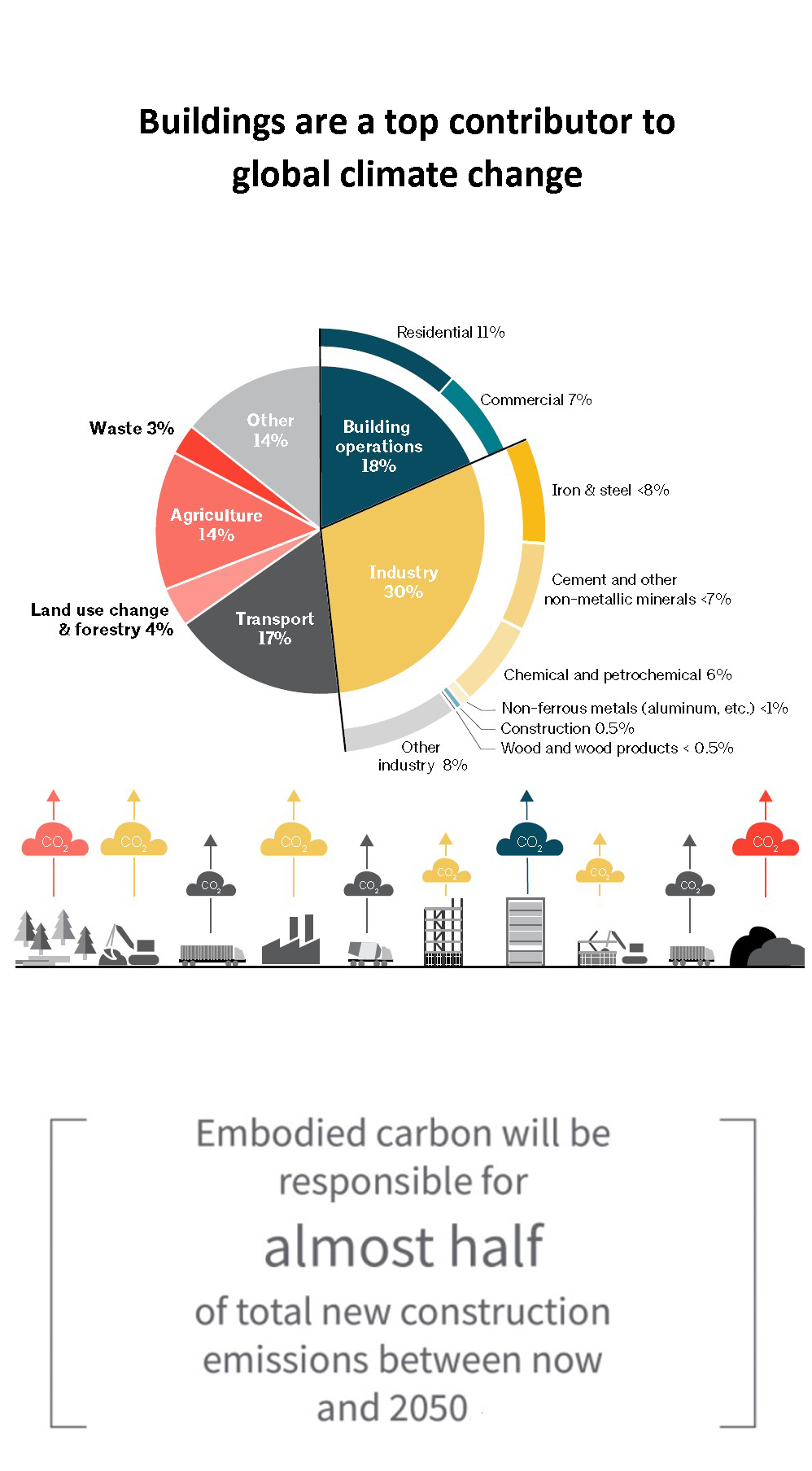Embodied Carbon Reduction
Reducing Embodied Carbon in Buildings – High Value Opportunities
Embodied Carbon Reduction – Buildings are currently responsible for 39% of global energy related carbon emissions: 28% from operational emissions, from energy needed to heat, cool and power them, and the remaining 11% from materials and construction.
Built environment – the largest overall contributor to greenhouse gas emissions, can be either an existential threat or the source of transformative solutions to climate change.
Embodied carbon refers to the carbon dioxide (CO₂) emissions associated with materials and construction processes throughout the whole lifecycle of a building project. This includes any CO₂ created during construction, including through the manufacturing of materials, the transportation of those materials, and the processes used to construct the building. It also encompasses the CO₂ produced in maintaining the building and eventually demolishing it and disposing of the waste. It does not include operational carbon.
Why now?
We need to reduce embodied carbon now, before new buildings are built, in order to reach climate targets that allow us to avoid catastrophic climate change. Emissions released now are more critical than emissions released later because emissions will accumulate in the atmosphere; and there is limited time remaining before the tipping point of the climate crisis—this idea is known as “carbon lock-in. This means that in the near-term, action to reduce embodied carbon is as important as or more important than operational carbon.
Embodied Carbon Standards and Methods
There are now many important standards for embodied carbon assessment of buildings and construction. These include:
- EN 15978 – Sustainability assessment of construction works
- EN 15804 – Environmental Product Declarations. This standard is the product level standard that feeds into the above building level standard, EN 15978
- PAS 2080 – Carbon management of infrastructure works
- RICS Whole Life Carbon Assessment for the Built Environment
To achieve net zero and carbon neutral construction goals, reducing embodied carbon in buildings is crucial. However, there is a lot of uncertainty about how to reduce embodied carbon. Our experience with life-cycle assessments (LCAs), which are used to balance embodied and operational carbon without jeopardizing architectural purpose. Our expert consulting services will reduce embodied carbon to meet green-building rating systems like LEED, Living Building Challenge, and BREEAM.
GCAS offers advice on how to reduce emissions from new construction and remodeling projects. We can help you better understand the emissions impact of your building and the various goods that go into it by using best-practice industry techniques that integrate life-cycle assessment, Environmental Product Declaration (EPD), and Global Warming Potential (GWP) ratings.

